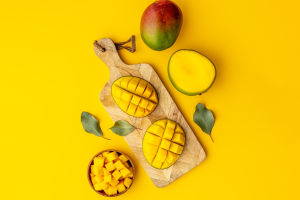French fries are a beloved delicacy, but achieving the perfect fries with a crispy outside and a soft inside is an art and a science.
Several key steps and techniques are essential for frying crispy fries, from selecting the right ingredients to the actual cooking process.
First and foremost, choosing the right potatoes is crucial. Potatoes with a high starch content, such as Lasseter potatoes, are the best for making fries. These potatoes hold their shape during frying and form a crispy outer layer.
Avoid using potatoes with a low starch content, such as red potatoes or new potatoes, as they tend to become mushy during frying and do not achieve the desired crispiness.
The way you cut the potatoes significantly affects the taste and texture of the fries. When cutting, aim for consistency in size to ensure the fries cook evenly. If the fries vary in size, some will be overcooked while others remain undercooked.
Generally, the thickness of the fries should be between 0.5 and 1 cm. This thickness ensures a crispy outer layer while maintaining a soft inner texture.
Soak the cut potatoes in cold water for at least 30 minutes. This step removes excess starch from the surface of the potatoes, preventing the fries from sticking together during frying.
After soaking, drain the potatoes thoroughly and use a clean kitchen towel to remove any excess water. Too much water on the potatoes will cause the oil to splatter during frying, which can affect the taste and safety of the cooking process.
Next comes the critical step of frying. Double frying is the most effective method for achieving crispy fries. First, heat the oil to about 160 degrees Celsius and fry the potato strips for the first time for about 5 minutes until they are soft but not colored.
Then remove the fries, drain the excess oil, and let them cool. This initial frying ensures the fries are fully cooked inside and ready for the second frying.
Before the second frying, heat the oil to about 180 to 190 degrees Celsius. Fry the cooled fries again for about 2 to 3 minutes, until they are golden and crispy on the outside.
This second frying must be done quickly to ensure that the outer layer forms a crispy texture while the inside remains soft. After the second frying, remove the fries, drain the excess oil, and sprinkle with an appropriate amount of salt.
Choosing the right oil is also a key factor affecting the taste of fries. Vegetable oils that are stable at high temperatures, such as peanut oil, rapeseed oil, or corn oil, are excellent choices.
These oils have a high smoke point, remain stable at high temperatures, and are less likely to produce harmful substances, ensuring the fries are both delicious and healthy.
Enjoying fries immediately after frying is also crucial for maintaining their crispy texture. If left for too long, fries will absorb moisture from the air, causing the outer layer to soften and lose its crispiness. Therefore, it is recommended to enjoy the fries right after frying to experience the best taste and texture.
In addition to the traditional double frying method, there are other tips to help achieve crispier fries. For example, after the first frying, you can put the fries in the refrigerator and freeze them for a while before the second frying.
Freezing can further remove moisture from the surface of the fries, making it easier to form a crispy crust during the second frying. Additionally, adding a small amount of cornstarch to the fries during the frying process can increase their crispiness.
By following these steps and paying attention to detail, anyone can make perfect fries with a crispy exterior and a soft interior at home. Experimenting with different methods and techniques can help you find the best approach to suit your taste, turning every French fry experience into a delicious enjoyment.


